Reviews
They
Bill Rebane (as Ito)
USA, 1974
Credits
Review by Thomas Scalzo
Posted on 07 October 2012
Source Regal Home Video VHS
Categories 31 Days of Horror IX
Bill Rebane: if you know him, you know The Giant Spider Invasion. And if you know The Giant Spider Invasion, you most likely know the Mystery Science Theatre 3000 version, with its running commentary of good-natured mocking. While it’s certainly true that Rebane’s work, Spider Invasion in particular, is a treasure trove of ridicule-friendly horror, the man should not be dismissed as a mindless moviemaking hack. He may have routinely lacked for funds, but a thorough examination of his output shows a man with an obvious fascination with fantastic tales, and a fierce determination to bring those tales to life. Whether that determination led to relying on hokey special effects or dialogue heavy screenplays, Rebane found a way, time and again, to tell his stories. And that’s what makes Rebane’s films resonate, despite their obvious shortcomings: they are his films. They are labors of love, filled with a charming purity that can only be achieved by an independent artist following his vision. On Sundays this month we’ll take a look at four features from this low-budget auteur from Wisconsin.
Stan
What on Earth is that?Andy
It’s a red light.
To the casual horror fan looking for an exciting tale of alien carnage, Invasion from Inner Earth will register as a disappointment. For starters, there is a lot of talking. A lot. Our main characters sit around a mountain cabin and talk. A lonely DJ sits in his booth and talks. Two dim-witted eyewitnesses go on a television show and talk. In fact, nearly every significant plot point is told, rather than shown, to us. To make things even less compelling, what alien invasion action we do get to see is limited to corny UFOs on strings, poorly shot scenes of citizens running amok, and a few fiery plane crashes that take place off screen. Add in a gore factor of zero - humans succumb by either contracting a mysterious illness or simply disappearing - and the fact that the aliens themselves are nothing but blinking red lights, and it’s easy to understand why this film is routinely reviled. And yet, for anyone willing to venture into the world of Invasion from Inner Earth with an open mind, and low expectations, the idiosyncrasies of Rebane’s characters, coupled with a fantastic and befuddling back-story, make for an enjoyable - at times even mesmerizing - experience.
Our story begins in the desolate Canadian wilderness, within the cozy confines of a rustic cabin owned by the brother and sister team of Jake and Sarah. Aside from living off the land and lamenting their father’s recent death, Jake and Sarah rent out small corners of their cabin to visiting scientists. Their latest guests, the knowledge-seeking trio of Eric, Stan, and Andy, have recently concluded their fieldwork and are about to return to the big city. Before the boys board Jake’s twin engine for the trip back to civilization, however, we learn that Sarah and Eric have taken a liking to each other, and that they are both somewhat discomfited at the idea of Eric’s imminent departure. With this tenuous human drama thus established, the plane takes off, Sarah resignedly going back to her quiet life of chopping wood and brewing coffee. Or so it would seem.
As Jake approaches his destination, Sam, the tower controller, frantically warns him not to land. Some sort of plague is running rampant, Sam says. Everyone is dying. Sam even goes so far as to stumble onto the runway to prevent Jake from touching down. As Jake banks the plane and heads for a nearby airport, Sam collapses, clearly in the throes of death. The plot thickens as the group arrives at their second destination. The place is deserted, without even a drop of gas left to borrow. Though they are able to make radio contact with a nearby station, the information they scrape together leaves them more confused than before: People are dying in the streets. Communication channels are failing. There is no explanation. And what is the source of that strange red light that keeps appearing and disappearing? Bereft of answers, Jake points the plane back toward his cabin, Eric, Stan, and Andy still in tow. All they can do is make sure Sarah is okay, and then try to figure out a plan.
Say what you will about Rebane’s poor use of special effects, or over-reliance on dialogue, but the man understands how to set up an interesting narrative. With little more than a frantic tower operator, an abandoned airport, and some dire warnings, Rebane sets up an atmosphere of tension and imminent doom. Though we don’t have much by way of details, we know something is terribly wrong and that there isn’t anywhere to go for help. These facts, coupled with the established remoteness of the cabin, ensure that the isolation of the characters is logical and believable. Also, by limiting communications to a few garbled radio transmissions, the audience is compelled to piece together the story along with the characters, gathering clues and making guesses as to what is happening. Even when the actual details of the plot make themselves known, in all their ludicrous glory, I still found myself engaged in the tale, and curious to know how it would all come together.
Greatly enhancing this sense of engagement is the wonderfully eclectic musical score. Whether its stereotypical 1950s sci-fi sound effects, the droning organ notes of countless horror films, groovy flute music, or eerie synthesizer chords, Rebane fills each scene with driving, piercing, or disquieting music. Though such inconsistency does, at times, distract from the action unfolding on screen, the overall effect of the music is one of tension and movement. Even if nothing much is happening on screen, the music pulls us along: subtly implying that all this is leading somewhere. Thus, by way of bizarre music choices and economic, creative storytelling, Rebane instills a commendable sense of mystery into the scenes featuring his five main players. Sadly, the director undercuts the magic of these moments by continually interrupting them with oddly staged radio and television broadcasts.
Why Rebane decided such touches were necessary is beyond me. Why bother to create an entirely new scene showing a DJ speaking when it would have been much easier to show the folks in cabin listening to the radio? Why undermine a tense atmosphere of dread with a television show poking fun at people who believe in aliens? Why use these segments to reveal plot points that our main characters are not aware of? It’s this last question that bothers me the most, since imaging ourselves in the isolated cabin, bereft of concrete information, is one of the more intriguing aspects of the film. As soon as we learn something that they don’t, our ability to connect with them is diminished. In a film with precious little to latch on to, a carefully crafted connection to character should not be so wantonly discarded.
Still, poor choices aside, Invasion from Inner Earth is an intriguing film. Not as brazenly ridiculous as The Giant Spider Invasion or The Capture of Bigfoot, or as ambitious as The Demons of Ludlow or The Game, it is nevertheless an admirable effort by a man determined to capture the quiet dread of apocalyptic horror, despite an obvious lack of resources. Where some directors would have poured all their money into crafting memorable monsters and blood-soaked death scenes, Rebane was clearly more interested in the psychological implications of the tale, and directed his efforts into crafting a threatening mood and an atmosphere of unease. I can only imagine that this approach is the more difficult, both in terms of creating a film, and in terms of selling it. However, for my money, I’m glad Rebane told the story he wanted to tell: after untold rubber-suited monsters have faded from my memory, I know I’ll still remember Stan and Jake sitting at the kitchen table discussing Martians, the Bible, and the invasion from inner earth.
More 31 Days of Horror IX
-
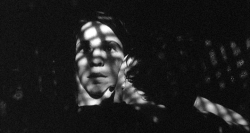
The Addiction
1995 -

Psycho III
1986 -
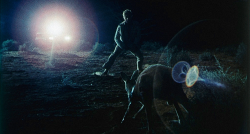
Wake in Fright
1971 -

Blacula
1972 -

Big Foot
1970 -

Trollhunter
2010 -

Invasion from Inner Earth
1974 -

In the Company of Men
1997 -

Happy Birthday to Me
1981 -

I Drink Your Blood
1970 -
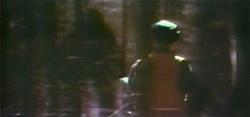
The Legend of Boggy Creek
1972 -

Maximum Overdrive
1986 -
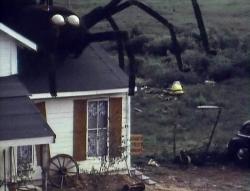
The Giant Spider Invasion
1975 -

Ganja & Hess
1973 -

Not of This Earth
1957 -

Let’s Scare Jessica to Death
1971 -

Next of Kin
1982 -

Def by Temptation
1990 -
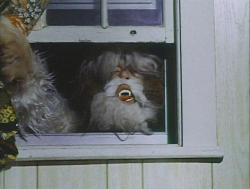
Shriek of the Mutilated
1974 -

The Manster
1959 -

The Alpha Incident
1978 -

The Bride
1985 -
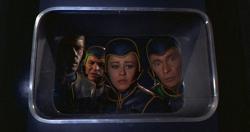
Planet of the Vampires
1965 -

The Hole
2009 -
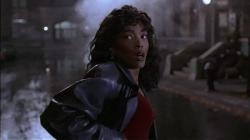
Vampire in Brooklyn
1995 -

Sasquatch: the Legend of Bigfoot
1977 -

Mad Love
1935 -
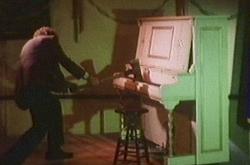
The Demons of Ludlow
1983 -

Habit
1997 -

Elephant
1989 -
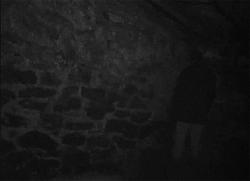
The Blair Witch Project
1999
We don’t do comments anymore, but you may contact us here or find us on Twitter or Facebook.



